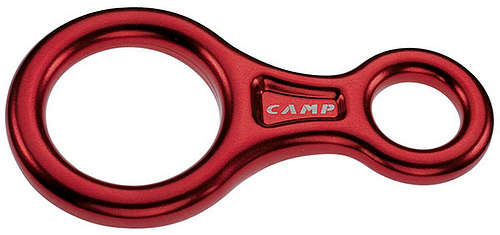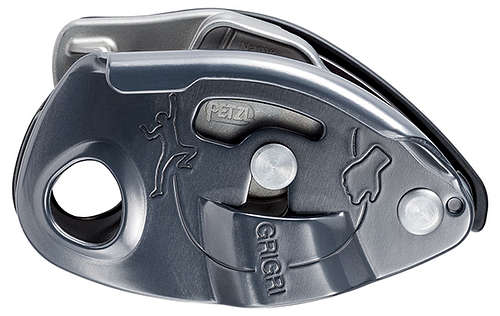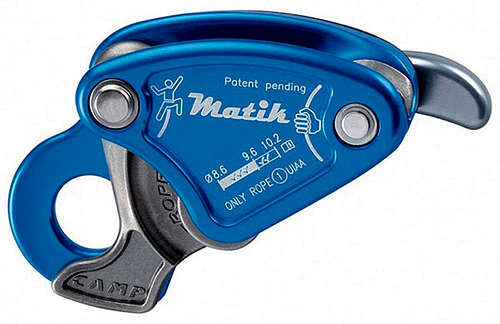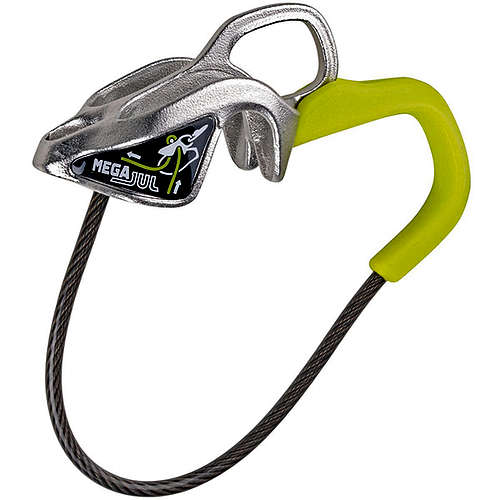Add Heading Here
Evolution of the belaying and rappelling devices for rockclimbing and mountaineering
About 20-30 years ago, we used horned Figure Eights for belaying and were quite happy as it was cheap and universal, it’s good both for training and industrial climbing. However, now, the progress of safety equipment in mountaineering and rockclimbing gives us the opportunity to a much wider selection of various devices for belay and protection. In order not to get confused in this variety, you need to understand the features of various groups of devices and the nuances of their use. Let's look at the categories of belaying and rappelling devices that are relevant for mountaineering and rockclimbing - universal devices that allow you to belay the leader or organize top rope protection, and also work as rappelling devices for single or double rope.
This category includes a wide variety of devices that structurally retain the main idea of the prototype - two combined rings of different diameters. The rope passes through a larger ring and is braked bending over the carabiner, or, in another way, by the body of the figure eight. "Figure Eight" – it is the unconditional classic of the genre, fully retaining relevance in the mountain climbing sports. Of the main pluses, it should be noted that the the figure eights work on any rope diameters, they are not dependent on the hardness and quality of the rope, the ring of the large diameter allows you even to pass knots while using the fixed ropes for descent. Figure Eight can be used both for single and double ropes. Among the disadvantages of the “figure eights” it is necessary to highlight their twisting rope feature, as well as complete inability of the device to block the rope if in case of losing control over the belay strand. The choice of this belay device is justified if you are forced to deal with worn, dirty or icy ropes, when descending along stationary fixed ropes of doubtful quality. As for rockclimbing, the figure eight belay devices are losing their relevance, up to a ban on the use in some indoor rockclimbing gyms - this trend is now noticeable in many countries.
Next comes a fairly wide category of belaying devices, collectively called ATC or “tubular” safety devices. Plates, baskes, Riverso and other design solutions for belaying belong to this category. The term of ATC cames from one of the first devices of this design, released under the American Black Diamond brand - ATC (Air Traffic Controller). This belay device category is the result of a serious evolution of safety devices. Most of the engineering work was done to facilitate the use of the device during belaying or rappelling, reduce the load on the belaying strand, and reduce the risk of loss of control. In the devices of this category, the unpleasant effect of twisting the rope, characteristic for the “figure eights”, as well was significantly reduced. Devices of the ATC category are quite universal for both mountaineering and rockclimbing, they can be used for belaying and rappelling using single or double rope technique. Some devices, for example, Riverso from PETZL, have advanced functionality - due to some contractual elements they can be used to organize blocks or hauling systems - but this is no longer for the average user. As for the disadvantages of this group of the belay devices, their sensitivity to the diameter and quality of the rope should be mentioned. Since the main constructive goal was to increase control over the rope, this led to decrease in the working clearance in the devices. As a result - devices of the ATC category can work unstably with the dirty, worn or irregular diameter ropes. In addition, this category of devices, providing better control over the rope compared to the Figure Eight, is still not automatic - that is, an uncontrolled ground fall may occur if you lose control over the belaying strand.
The third category of the belay and rappel devices is called ABD (Assisted Breaking Devices). Due to their design features, devices of this category provide maximum safety when climbing - even if the control of the belaying strand is lost, the device blocks the rope automatically or ensures its safe braking. Today, in many indoor rockclimbing gyms over the world, this device format is the only one allowed for belaying. The leadership in this category certainly belongs to Gri-Gri - a permanent leader among automatic belaying devices since its introduction in 1991. During the existence of Gri-Gri appeared many successful and not entirely successful realizations of the ABD feautured devices from various manufacturers, which understood the whole appeal of the market - to create the safe belay device with the automatic rope blocking function. In addition to Gri-Gri in the ABD category should be mentioned Edelrid Jul, Beal Birdie, BD ATC Pilot, Trango Vergo, Camp YoYo, CT Alpine Up and so on.
The main feature of the devices of this category is their ability to block the rope without any actions of the belayer. This is achieved in various ways - using mechanical parts as in Gri-Gri, or due to the specific form of the device - as in Jul. Like ATC devices, all the belaying devices of the ABD category are quite demanding on the diameter and condition of the rope. Due to that they are not acceptable on a number of mountain climbing routes, but are very useful when used in the indoor or outdoor rockclimbing trainings. As a summary of this review, I want to add that whatever device you use for belay or rappel, your safety does not depend on the type of this device, but solely on the qualification and attention of the belayer.
A key aspect of safety is the correct belay technique and understanding of the personal responsibility for the life and health of your partner. Essentially, it must be noted that, with the exception of some nuances, the belay technique does not change when using various belaying devices - the belaying strand of the rope must be controlled 100% time, regardless of the type of the belay device - no automatic solutions will correct the consequences of the belayer's mistake.
Some subjects are consciously left outside of the scope of this review - a classic rappel “Dulfer”, using UIAA knot for belay and rappel, old Soviet belay devices like Petal and Shticht Plate – someday a retro report will be made separately on this topic. I also did not say anything about devices that work exclusively for descent - ladders, retrams, paratroopers, etc. - they are intended for industrial purposes and speleology.
External Links
More articles on the mountain climbing from MSC AlexClimb






